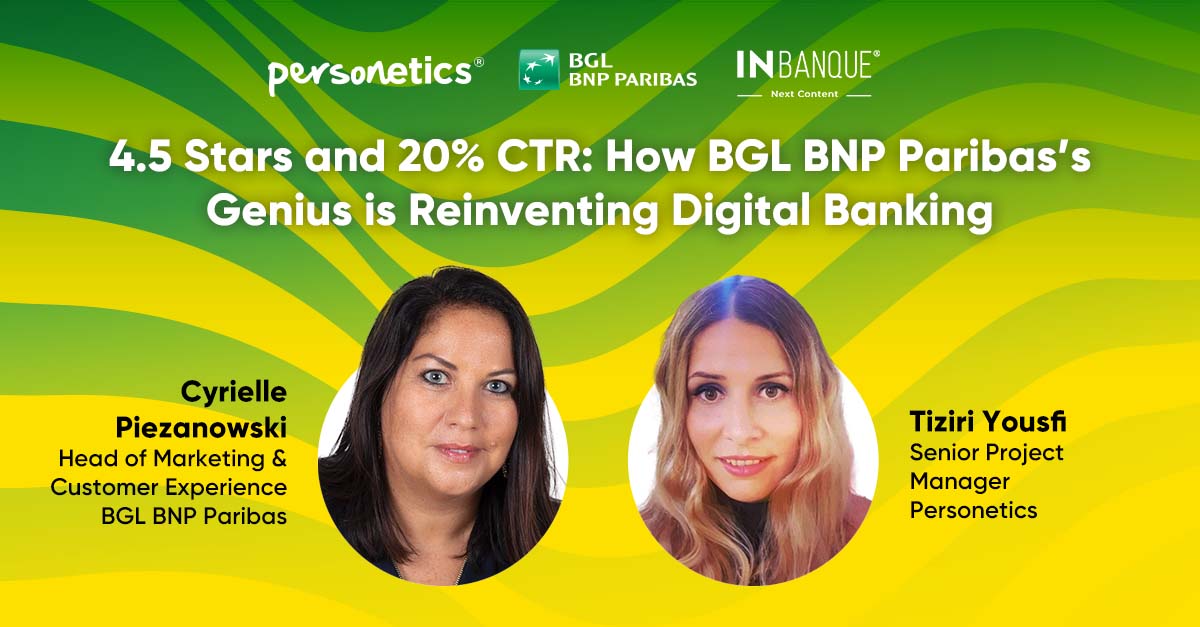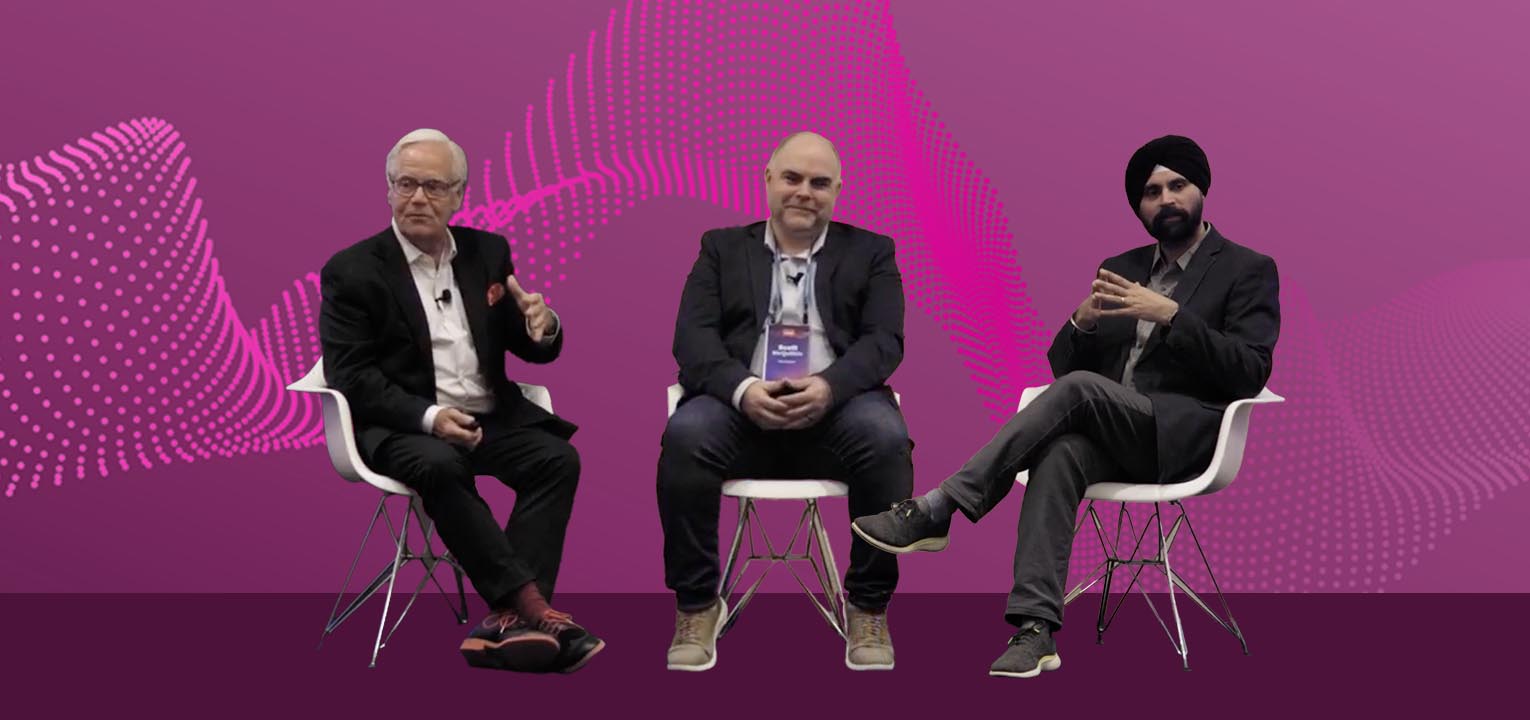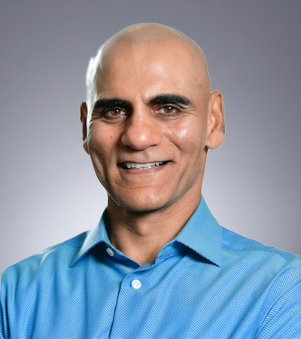August 14, 2025
Truist’s Performance Marketing Journey: From Merger Challenges to Million-Dollar Results

By Jody Bhagat, President Global Banking, Personetics
The 2025 Financial Brand Forum is in the books and was a big hit with attendees. I had the pleasure of sharing the stage with Sherry Graziano, EVP, Head of Digital, Client Experience, and Marketing at Truist, to explore how performance marketing can drive greater impact when complemented with Cognitive Banking capabilities. Sherry is an innovative banking leader, recently named to the Executives to Watch List by Banking Automation News. What emerged from our discussion was a compelling case study of how a major financial institution successfully navigated post-merger complexity while building a data-driven marketing engine that now drives 65% of the bank’s digital sales.
Performance marketing in banking differs from traditional brand advertising; it measures outcome-driven engagement, where every campaign and touchpoint can be tracked directly to business results such as account openings, product adoption, and client relationships.
The Post-Merger Reality Check
Truist’s journey offers valuable lessons for banks looking to modernize their marketing approach. When SunTrust and BB&T merged five years ago, they faced what Sherry described as losing “over 100 years of brand equity” while simultaneously managing vast amounts of disparate data from two established regional banks.
“When you think about a merger in financial services, there’s an enormous amount of data to manage, and it’s not necessarily structured the same way,” Sherry noted. The challenge wasn’t just technical, it was foundational. Before any sophisticated marketing could happen, Truist needed clean, usable data with proper governance structures in place. As Sherry emphasized: “Get it right. Make sure you have the right governance in place, otherwise you’re just putting some new tool or technology on top of perhaps a bad business process or a bad foundation.”
This data foundation became the cornerstone of everything that followed. “We have an enormous amount of data and it is incredibly rich,” Sherry said, “but we’ve invested significant time, effort, and energy to make sure we have usable data. It’s clean and well-structured to deliver the appropriate insight based on what we identify as the next best opportunity or conversation to engage with our clients along their journey.”
Flipping the Script: From Products to Client Journeys
The bank’s fundamental shift in organizational thinking struck a chord with the audience. Rather than maintaining traditional silos where distinct teams own different parts of the marketing funnel, Truist created what Sherry calls a “connected channel strategy” that brings together digital, client experience, and marketing functions under one umbrella.
The real breakthrough came when Truist moved from product-centric campaigns to client-centered journeys. “We’ve totally flipped the script,” she explained. “We’re laying things out around what we call the client journey taxonomy, and we set a standard across all the teams. That’s all based on the client.”
This journey-based approach applies across all business lines—consumer, small business, wholesale, and wealth management—creating consistency whether clients are engaging with deposits, lending, investments, or credit cards. Rather than focusing on selling specific products, Truist shifted to understanding the “jobs to be done” at each stage of the client journey. The result is a unified experience that addresses what clients actually need to accomplish in their financial lives rather than pushing specific products.
The Performance Marketing Payoff
The business results validate the power of Truist’s performance marketing approach, which now drives 65% of its digital sales, with digital channels accounting for more than 40% of all new accounts opened for the bank. These aren’t just impressive percentages; they represent a fundamental shift in how banking relationships begin and develop through measurable, outcome-focused engagement.
With over two million logins daily across the bank’s digital channels—82% coming through mobile where clients log in 18 times per month on average—Truist has created unprecedented opportunities for meaningful engagement. Every single time clients log in, they receive Truist Insights, powered by Personetics’ Cognitive Banking platform. Since inception, the bank has delivered over a billion insights to its clients, achieving a 16% click-through rate and a 4.5 out of 5-star rating from clients.
As Sherry noted: “We have solutions that we’ve deployed out there that allow our clients more meaningful, relevant insights and information upon which they can take action, on any channel of choice.”
The Connected Channel Advantage
Truist’s “connected channels” approach means that insights delivered digitally are also available to branch teammates through digital admin hubs, creating transparency regardless of how clients choose to engage. With nearly two thousand branches, Truist ensures teammates are equipped with the same insights and messaging that clients see digitally, delivering what Sherry calls “personalized, empowered experiences” across all touchpoints.
The Formula for Success
During our session, Sherry outlined what she considers the keys to success in this transformation:
- Strategic alignment: “Make sure that you are 100% aligned with your business partners on the goals and how you’re going to drive to personalization outcomes.”
- Client-centered focus: Keep the “client lens at the center of everything you’re doing.”
- Strong partnerships: Build collaborative relationships both internally and with technology partners.
- Measure business outcomes: Establish clear KPIs and know what you’re testing toward, with baselines and expected outcomes defined upfront.
- Start with what’s achievable: Begin with capabilities you can implement now, then build momentum from there.
When these success factors come together, they enable what Sherry describes as the ultimate approach: “Right message, right time, right place, right channel, right client. Ultimately, that matters if you want to not only drive engagement, but a level of loyalty with your clients.”
This formula creates a new measurement yardstick for performance marketing in banking—moving beyond simple conversion tracking to measuring client relationship progress and financial wellness outcomes.
Looking Ahead
As we concluded our session, it was clear that Truist’s journey represents more than just a successful marketing strategy; it’s a blueprint for how financial institutions can compete more effectively in an environment where customer expectations continue to rise.
The collective impact of clean data, journey-based thinking, and Cognitive Banking capabilities may represent the future of performance marketing in banking. When you get the foundation right—when you truly understand what clients need based on their financial behaviors rather than what products you want to sell—the results speak for themselves.
For those who weren’t able to attend our session at the Financial Brand Forum, the key takeaway is this: performance marketing in banking is no longer just about measuring conversions; it’s about measuring how effectively you can help increasingly empowered customers achieve their financial goals while building lasting relationships.
Interested in building your own client-centered marketing approach to drive business outcomes?
Schedule a complimentary consultation to learn how Personetics’ Cognitive Banking platform can help you.
Want To See How Cognitive Banking and AI Can Transform Customer Engagement?
Request a Demo Now
Latest Posts

How Asia Pacific Banks Are Redefining AI-Driven Engagement

How iBank and Personetics are Transforming Personal Finance in Japan

Beyond Transactions: How Synovus is Creating Deeper Digital Engagement at Scale

4.5 Stars and 20% CTR: How BGL BNP Paribas’s Genius is Reinventing Digital Banking

The AI Implementation Reality Check

Why Asia Pacific Pacific Banks Must Lean into Cognitive Banking: A Conversation with Dr. Dennis Khoo

Jody Bhagat
President Global Banking
Jody brings deep operating experience in financial services – managing direct channels, launching digital ventures, and leading digital transformation programs. He was previously a Partner at McKinsey & Company, where he helped financial institutions define and execute digital transformation programs to drive customer growth and operating efficiency. Jody also served in senior digital operating roles at U.S. Bank, Wells Fargo, and Providian. In these positions, he led digital sales and service functions and direct to consumer businesses to deliver organic growth and enhanced customer experience. Jody has an MBA from Northwestern University and a BS in Computer Engineering from The University of Michigan.









